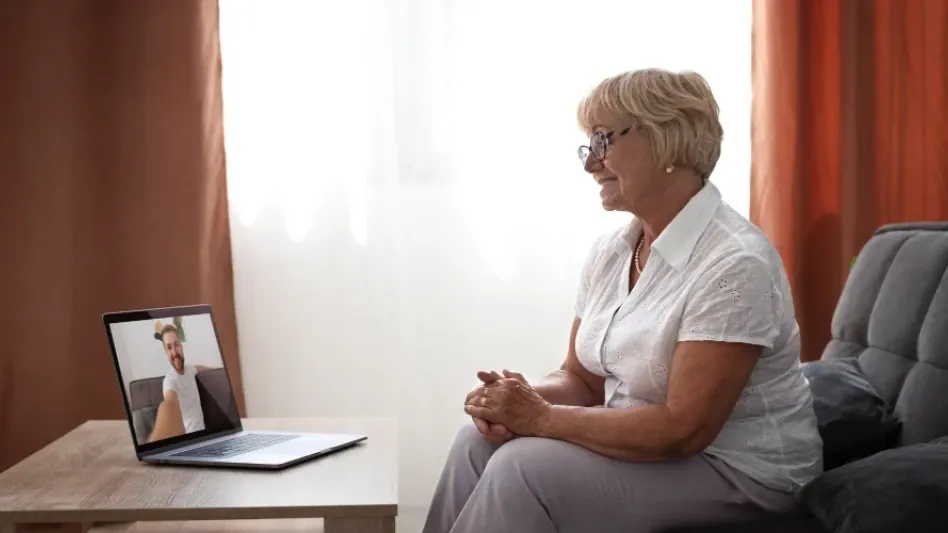As the March 31 deadline approaches, the future of Medicare telehealth funding remains uncertain, causing anxiety among patients who rely on these services. The potential discontinuation of telehealth funding poses significant concerns, especially for individuals with transportation issues. Many patients have come to depend on telehealth as a vital lifeline, making its potential loss more dire. Telehealth services have become an integral part of modern healthcare delivery, helping bridge gaps and extend care to those most in need.
The Importance of Telehealth
A Vital Service for Vulnerable Populations
Telehealth has become an essential mode of healthcare for many, particularly seniors and those with mobility challenges. The ability to have remote medical consultations through audio and video communication has made healthcare more accessible and convenient. For individuals who struggle with transportation or face other barriers to attending in-person appointments, telehealth provides a crucial alternative. This modality not only addresses physical health concerns but has also emerged as a significant resource for mental health support and routine chronic care management.
There are countless success stories illustrating how telehealth has changed lives by enabling patients to receive timely and effective care from the comfort of their homes. Institutions like St. Luke’s University Health Network leverage their Virtual Urgent Care services to extend their reach and provide immediate medical consultations for myriad health issues. The convenience of telehealth means timely interventions, which can be particularly life-saving for individuals with chronic conditions. Additionally, telehealth’s flexibility has allowed healthcare providers to maintain continuous care, fostering stronger patient-provider relationships that drive better health outcomes.
Expansion During COVID-19
The significant expansion of Medicare telehealth services began in March 2020 in response to the COVID-19 pandemic, which underscored the need for adaptable and resilient healthcare solutions. The federal government granted emergency flexibility to include telehealth under Medicare coverage, ensuring continued access to healthcare while minimizing virus exposure. This move was pivotal in maintaining the continuity of care during unprecedented times, protecting both patients and healthcare providers from potential virus transmission.
The emergency flexibility not only prioritized patient safety but also demonstrated the efficiency and effectiveness of telehealth as a permanent fixture in the healthcare ecosystem. As the pandemic progressed, the accessibility offered by telehealth services became irrefutable, prompting discussions on integrating these services into the healthcare system post-pandemic. Subsequent legislation provided further support for mental health telehealth services, marking a milestone for the integration of telehealth in treatment plans. However, the temporary extensions for other health-related telehealth services have left many questioning the long-term viability of these essential services as the March 31 deadline approaches.
Political and Financial Uncertainties
Inconsistent Political Stances
The political landscape complicates the future of Medicare telehealth funding. President Trump’s assurances about protecting Medicare contrast with his support for budget plans proposing significant cuts to Medicaid, contributing to uncertainty among patients and providers. These conflicting stances have generated confusion and anxiety, casting doubt on the continued funding and support for telehealth services. The mixed messages from political leaders reflect deeper issues within the policymaking process, where health outcomes can become secondary to budgetary concerns.
This political inconsistency leaves many healthcare providers and patients in a state of apprehension, unable to plan for the future with any degree of certainty. It underscores the importance of clear and consistent policies, especially when it comes to essential healthcare services like telehealth. The lack of assurance about what will happen after March 31 exacerbates concerns for vulnerable populations who could be most impacted by the potential loss of these services. These ongoing uncertainties highlight the need for a more stable and bipartisan approach to telehealth funding.
Advocacy and Support
Despite political uncertainties, there is notable advocacy and bipartisan support for the continuation and expansion of telehealth, underscoring its recognized value across the healthcare landscape. Organizations such as the American Telemedicine Association and the American Medical Association are actively working to communicate the importance of telehealth to policymakers, striving to ensure its continued availability for millions of Medicare beneficiaries. Their efforts involve detailed conversations and presentations that showcase the tangible benefits and cost-effectiveness of telehealth services.
These advocacy efforts emphasize the comprehensive impact of telehealth, advocating for broader acceptance and integration into standard healthcare practices. The role of these organizations is crucial in bridging the gap between political decision-makers and the tangible needs of patients and providers. By demonstrating how telehealth addresses critical healthcare delivery challenges, these advocacy groups make a compelling case for the permanent inclusion of telehealth services under Medicare. They argue that the overall healthcare system stands to benefit significantly from sustained telehealth funding and integration.
The Role of Advocacy
Continuous Efforts
Christina Musser, senior director of Virtual Care and Patient Experience at St. Luke’s University Health Network, emphasizes the importance of ongoing advocacy. Efforts are continuously being made to ensure that telehealth services remain funded and accessible to patients in need. Her perspective highlights the ongoing communication with policymakers and the administration to underscore the critical nature of telehealth in modern healthcare. Musser’s optimism is rooted in the historical precedent of securing last-minute extensions, which reflects the recognition of telehealth’s role and importance.
The continuous advocacy by stakeholders and healthcare professionals involves detailed data and case studies demonstrating the positive impact of telehealth services. This grassroots level of involvement is essential for shaping policy changes and securing the future of telehealth funding under Medicare. Engaging with lawmakers and presenting evidence-based arguments are key tactics employed by advocates to keep telehealth at the forefront of healthcare policy discussions. Their persistence is crucial in navigating the complex political environment and ensuring that patient care remains a priority.
Historical Precedents
Musser’s confidence in the continuation of telehealth funding is bolstered by the history of last-minute extensions granted to these services. The collaborative push from multiple stakeholders aims to secure another extension and ultimately achieve permanent funding solutions. The pattern of last-minute extensions suggests a recognition among lawmakers that telehealth’s benefits are too significant to disregard. This historical context provides a sense of cautious optimism that similar outcomes may occur as the new deadline nears.
The ongoing advocacy and the bipartisan support enjoyed by telehealth services indicate a strong possibility for the continuation of funding. The concerted efforts from all involved reflect a shared understanding that telehealth has fundamentally transformed healthcare delivery. Achieving permanent solutions for telehealth funding would alleviate the recurring uncertainty faced by patients and providers, enabling them to plan better for long-term care. The advocacy continues in full force, with stakeholders striving to enshrine telehealth services as a permanent fixture within Medicare.
The Future of Telehealth
The Need for Permanent Solutions
The article highlights the critical role of telehealth in modern healthcare and emphasizes the necessity of finding permanent funding solutions. Telehealth has proven itself to be a sustainable and effective mode of care, especially for patients facing various barriers to traditional methods of accessing healthcare. Advocates argue that a permanent funding solution would eliminate the recurring anxiety associated with temporary extensions and allow for the continuous improvement and expansion of telehealth services. The importance of maintaining advocacy efforts cannot be overstated, as these efforts play a critical role in ensuring that telehealth remains an integral component of Medicare.
Future considerations include evaluating telehealth’s broader applications and potential to transform healthcare delivery further. Permanent funding would not only provide stability but also foster innovation and investment in telehealth infrastructure. Embracing technology-driven solutions enables the healthcare system to adapt and evolve, meeting the needs of a diverse patient population. The discourse surrounding telehealth’s future remains centered on the need for strategic planning and robust policy frameworks that support long-term sustainability.
Hope Amid Uncertainty
As the March 31 deadline looms, uncertainty surrounds the future of Medicare telehealth funding, causing concern among patients who heavily rely on these services. The potential end of this funding is particularly alarming for individuals facing transportation challenges, who have found telehealth to be an essential part of their healthcare routine. For many, telehealth isn’t just a convenience; it’s a necessary link to consistent medical care, especially in rural areas with limited access to healthcare facilities. The possible discontinuation threatens to disrupt a system that has successfully bridged considerable gaps in the delivery of medical services. Over the past few years, telehealth has proven invaluable in extending reach to patients in need, ensuring that critical care is accessible regardless of location. Patients, healthcare providers, and policymakers alike are anxiously waiting to see what the future holds, aware that the loss of telehealth funding would significantly impact the ability to provide equitable healthcare.









